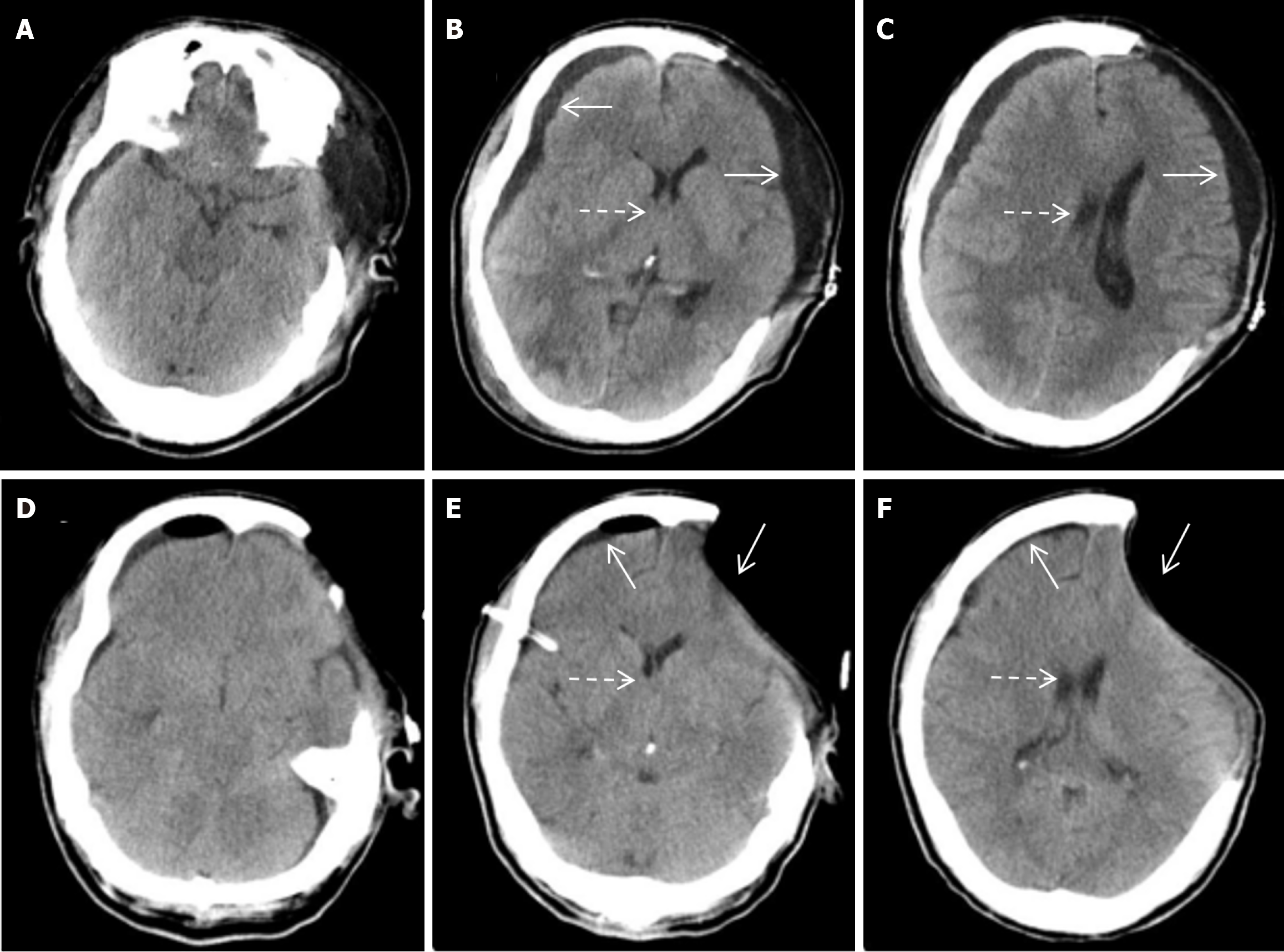Copyright
©The Author(s) 2025.
World J Clin Cases. Jun 16, 2025; 13(17): 103350
Published online Jun 16, 2025. doi: 10.12998/wjcc.v13.i17.103350
Published online Jun 16, 2025. doi: 10.12998/wjcc.v13.i17.103350
Figure 3 Computed tomography scan tenth day after decompressive craniectomy.
A-C: On the tenth day after decompressive craniectomy, a computed tomography scan was performed again, and an increase in bilateral subdural fluid accumulation was observed compared to before (white solid arrows); On the right side, there is a clear deviation of the midline to the left, and the right lateral ventricle is compressed (white dashed arrows); D-F: After the first subdural puncture drainage surgery, re-examination showed that the bilateral subdural fluid accumulation had basically disappeared (white solid arrows), and the midline was centered with improved compression of the right lateral ventricle (white dashed arrows).
- Citation: Lin MJ. Intractable subdural effusion after decompressive craniectomy for traumatic brain injury: A case report. World J Clin Cases 2025; 13(17): 103350
- URL: https://www.wjgnet.com/2307-8960/full/v13/i17/103350.htm
- DOI: https://dx.doi.org/10.12998/wjcc.v13.i17.103350









